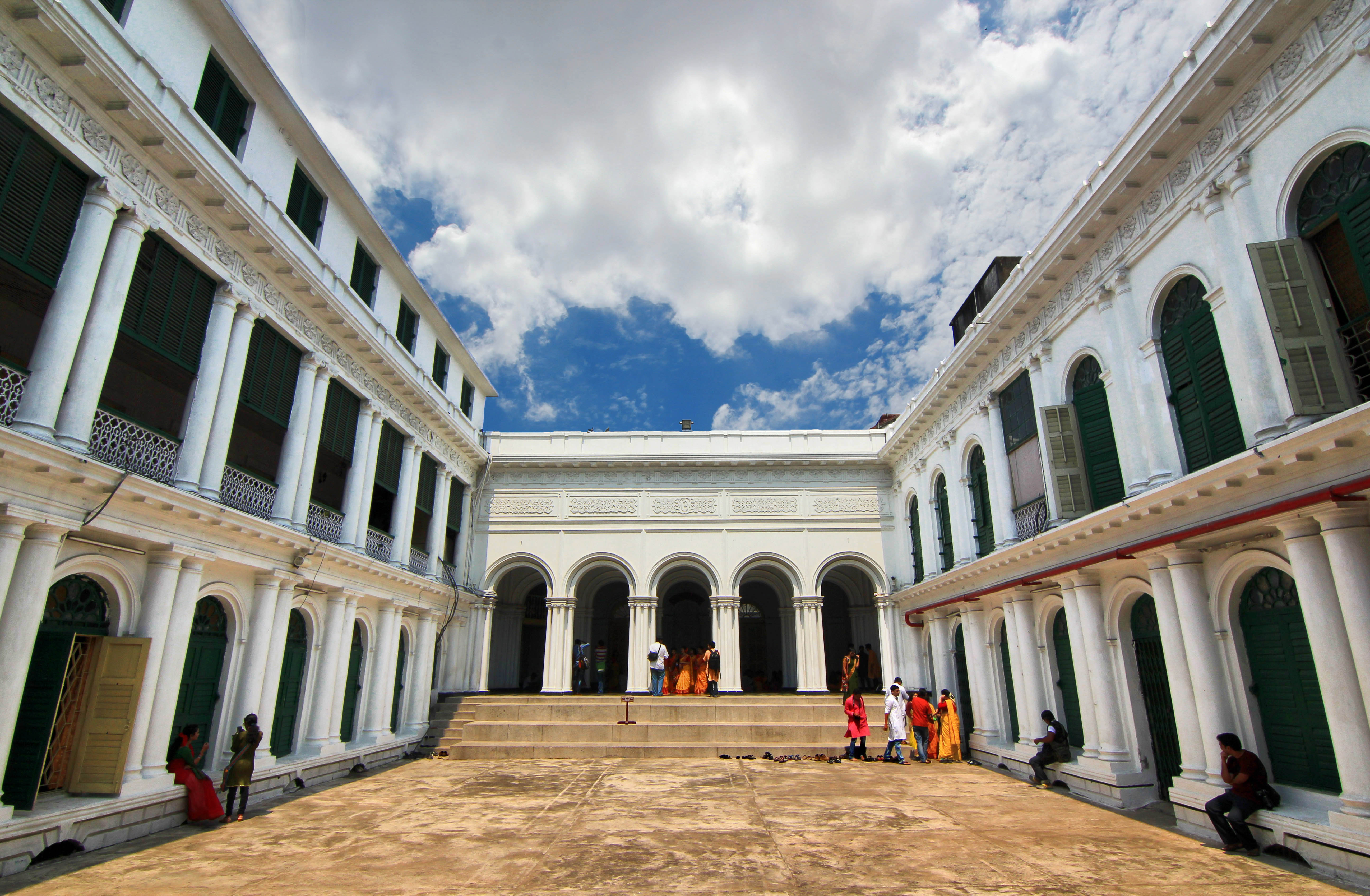The history of Jorasanko Thakur Bari goes back to 1784 when a piece of land was gifted to Nilmoni Tagore on the east side of Chitpur Road after he left his family home due to irreconcilable disputes within the family. Nilmoni Tagore built a small house at Jorasanko. The Thakur Bari was later expanded by Prince Dwarkanath Tagore, the illustrious grandfather of Rabindranath Tagore in the 18th century. Situated in the north of Kolkata, the mansion is located in Jorasanko, near Girish Park on Chittaranjan Avenue. The land was donated to Prince Dwarkanath Tagore by the famous Seth family. Rabindranath was born here in 1861 and spent a major part of his life in this home. It is here that the Nobel laureate passed away in 1941. The name Jorasanko came from the fact that there are twin Shiva temples near the home. The Jorasanko Thakur Bari is spread over 35000 square meters. The palatial brick red mansion was first started from a small house where different wings and alleys were added slowly to the original architecture. The rounded verandah adds to the advantage that members could clearly watch programs of the natya manch that was at the centre of the house. Even at a time when the purdah system was at its prime, the Tagores never followed it at their home. The women of the family were equally entitled for open discussions regarding culture, literature, art, business and sundry. This very outlook of the family, later contributed to greater cultural changes in the society.In 1959, the Government of West Bengal planned to establish a University as a memorial to Rabindranath Tagore. This was achieved during the birth centenary of the poet when the Rabindra Bharati University was founded on May 8, 1961 under Rabindra Bharati Act at his residential house in Jorasanko for better learning and culture, particularly in music, dance and drama. The Rabindra Bharati Museum was established in the following year. The University was inaugurated by the then Prime Minister Pt. Jawaharlal Nehru on Tagore’s birth centenary, 8 May 1962. Within the complex is Maharishi Bhavan, named after the poet’s father, Maharshi Debendranath Tagore, where, as the plaque outside reads, “Rabindranath was born and breathed his last here.” Today this house is a museum that has three galleries dedicated to Tagore, other eminent members of the Tagore family and the Bengal Renaissance. The galleries provide glimpses of intimate family photographs, life size portraits and Tagore’s evolution as a poet and philosopher. The Rabindra Bharati Museum has an overall collection of 2071 books, 770 journals, 16 paintings, 3297 photographs, 27 crafts and sculptures, 208 personalia and 3 pieces of furniture. The first gallery showcases the life of Tagore and his works. The remaining two galleries exhibit stories about his family and other stalwarts of 19th Century Renaissance Bengal. like Dwarakanath, Debendranath, Rabindranath, Abanindranath, Gaganendranath, etc. The two galleries on Art display paintings of Bengal School and portrait paintings of Tagore house drawn mainly by the Anglo- Indian School (western art gallery). Apart from these there are galleries displaying the life and activities of Rabindranath Tagore. The museum also has the Japan Gallery, China Gallery, the US Gallery and the Hungary Gallery that explore Rabindranath’s visit and relations with these countries. There are more than 700 paintings along with manuscripts, books and other antiques. The museum also boasts of a unique collection of around 3000 photographs placed on display. It has a section dedicated to old musical records.


Comments